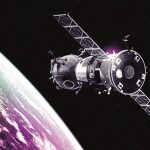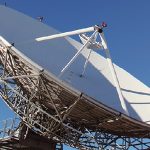North America is anticipated to dominate the market studied, during the forecast period, due to the highest number of ongoing research studies and investments in the market.
 The global satellite-based earth observation market was valued at $2.7bn in 2019, and it is expected to reach $4.4bn by 2025, registering a CAGR of 8.5% during 2020-2025, according to ResearchAndMarkets.
The global satellite-based earth observation market was valued at $2.7bn in 2019, and it is expected to reach $4.4bn by 2025, registering a CAGR of 8.5% during 2020-2025, according to ResearchAndMarkets.
Earth observation based on satellite offers value-added solutions to the businesses regarding the technical process, asset, and data management, which is likely to boost the market growth.
Enhancement of equipment for geographical information and image processing has led to enormous improvisation in the performance and price of the tools, owing to which the adoption rate is increasing, thereby fueling the market.
The use of the generated satellite images for various industries across diverse economic sectors and with a wide range of new applications, lower technology barriers, and the emergence of SMEs and startups in the imagery analytics market has brought a large-scale diversity in the market.
However, despite many advantages offered through the data collected and value-added services from Earth observation, the presence of open data, like EOSDIS from the US, Copernicus from Europe, etc. is likely to act as a strong challenge to the market growth.
The earth observation industry is continually developing, anticipating a seamless integration of new technologies, sensing modalities, and unconventional data sources. As the demand for earth observation data explodes to address the global population’s challenges, climate change, disasters, etc., the need for capturing the earth observation data on various scales, including a small scale to large scale, increases, thereby increasing the demand for satellite-based earth observation.
North America is anticipated to dominate the market studied, during the forecast period, due to the highest number of ongoing research studies and investments in the market, the presence of a sophisticated infrastructure to undertake space programs, and the quickest and highest adoption of commercial satellite imaging across various industries in the region.














































































